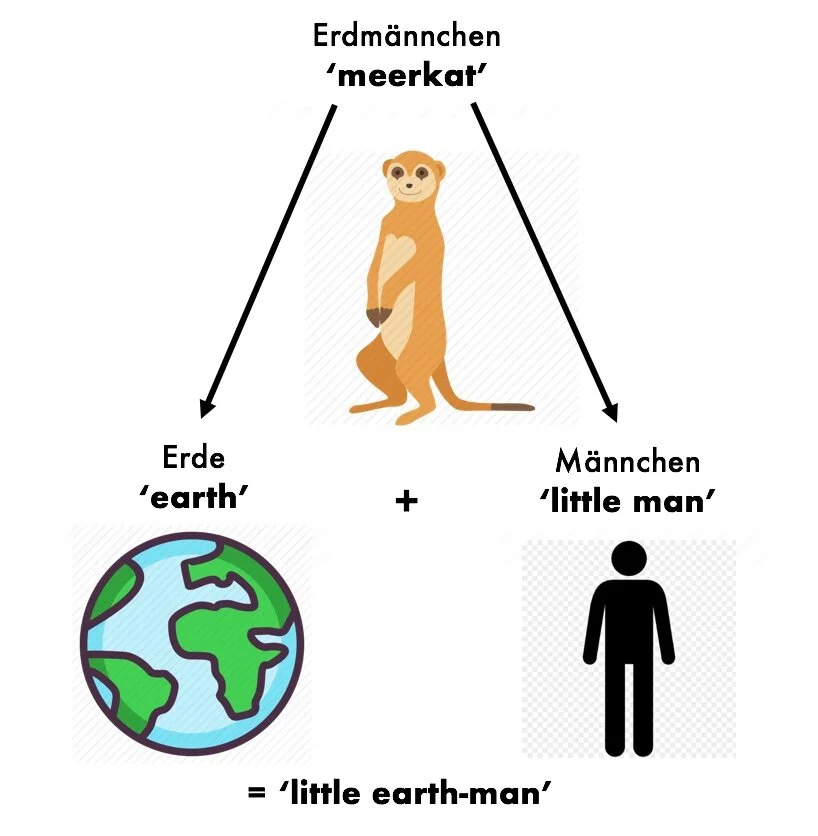AttentionSpanish
El Nido de Quetzalcóatl, Mexico. 📸: Lisa Jeon Ox.
INTRODUCTION
Today I want to talk about vowel alternations, a topic that is very relevant to Spanish verb inflection. By “alternation” we (linguists) mean cases where a meaningful word part (or morpheme) appears in more than one form. For instance, the present tense of decir ‘to say’ includes the forms dices ‘you say’ and decimos ‘we say.’ In my view the endings are [+s] (2nd singular) and [+mos] (1st plural), so we see two forms of the stem: dice- and deci-. (A third stem form appears in 1st singular dig-o ‘I say.’)
These differences in vowel qualities are not meaningful ones: these are all present-tense forms of the same verb. (Note that not all Spanish verbs have this same pattern of alternation! Traditional Spanish language pedagogy cuts up verb forms like these differently: dic+es and dec+imos, but I have my reasons for disagreeing, and I may write more about this in a future post.)
This post makes use of the concept of the phoneme, one of the most important items in the linguist’s conceptual toolkit. I present it here assuming little to no background knowledge on the part of the reader. If you’re studying Spanish, I hope this approach will make the task of mastering verbs a bit less monumental, and if you’re not, I hope the concepts and analytic approach I present are useful to you in whatever you study!
Part of our discussion appeals to the linguistic history and prehistory of Spanish, which as a Romance language is a descendant of Latin, the language of ancient Rome and the Roman empire. See here for a brief overview of the development of Latin to Spanish.
PHONETIC SYMBOLS
In order to make sense of what follows, the reader will need to know what is meant by certain phonetic symbols. Spanish, like English and many other languages, has a standard spelling system that uses the Roman alphabet. But as linguists we regard written forms as secondary: language is primarily spoken and heard, and words are structures made of sound (except for sign languages, of course). To bypass the peculiarities of spelling (“I before E except after C…”) linguists use a technical alphabet of our own, which uses many of the symbols of the Roman alphabet and adds other special letters, all with invariant sound values. The rule for the International Phonetic Alphabet (IPA) is, “one sound one symbol, one symbol one sound.”
The vowel symbols relevant to today’s discussion are [a, e, ɛ, i, ɪ, o, ɔ, u, ʊ] (see Tables 1 and 2), and we’ll also encounter the glides [j, w]. Glides are the consonants that are the most vowel-like: [j] (as in “Hallelujah”) is essentially an [i] of very short duration that functions the way a consonant, and likewise [w] is the consonant form of [u].
In terms of articulation, the factors that differentiate these various sounds are (1) jaw height, (2) tongue position, and (3) lip rounding. The first two of these are represented by the two axes of Table 1: the lower the vowel symbol lies in the chart, the lower the position of the jaw while producing the vowel. The symbols on the left represent vowels for which the tongue moves forward (we call these “front vowels”), and the ones on the right represent those where the tongue moves to the back (“back vowels”). This is not an exhaustive list—other languages have different sets.
Table 1: Position of vowels within the mouth.
Table 2: English and Spanish words exemplifying these sounds.
These are not the only vowels that occur in these languages, but just the ones most relevant to the topic here.
VOWEL ALTERNATIONS IN ENGLISH
Before we turn to our main topic, let’s first consider some of the ways vowel sounds can vary in English words. The noun (or verb) “photograph” has derivatives (that is, related words formed by adding morphemes) such as the agent noun “photographer” (with [+er] suffixed) and the adjective “photographic” (with suffix [+ic]). Aside from these endings, all three words consist of the same string of letters. But how similar do they actually sound? Say them aloud and note how they differ.
Here is where the IPA comes in handy: we can represent how the actually occurring vowels differ in quality. Another thing we can do is mark which syllable is stressed with the symbol [ˈ] preceding it. In Table 3 I break these words down into syllables.
Table 3: IPA transcriptions of related English word-forms broken into syllables.
The consonant symbol [ɾ] represents a tap, which is the “weakened” variant of t(t) or d(d) when an unstressed syllable follows. This is frequent in North American dialects of English, and is heard in the middle of words like “ladder” and “latter” (these sounds are kept distinct in many forms of English spoken elsewhere). The symbol [ˌ] marks the location of a minor (or “secondary”) stress, while the raised H in [tʰ] denotes aspiration, or the strong burst of air often produced in the onset of a stressed syllable.
Our interest here is in the vowels. As linguists, what should we say are the underlying vowels in the word stem spelled as <photograph->? In form (1), syllable 1 the vowel appears as [ow] when there is main or secondary stress on that syllable, but as the neutral mid vowel [ə] (called “schwa”) when that syllable is unstressed, as in form (2).
Likewise, the vowel of syllable 2 is [ə] when unstressed in forms (1) and (3), but [ɔ] when the stress falls on that syllable, in form (2). (The onset consonant varies according to stress as well, [tʰ] versus [ɾ].) And in syllable 3, we see yet another alternation: [æ] in (1) and (3), and again [ə] in (2), following the stressed syllable.
An unsatisfactory and inelegant way of dealing with these alternations would be to notate all possible variants (shown in parentheses), à la
f (ow/ə) (t/ɾ) (ow/ə) g ɹ (æ/ə) f
(Remember, we’re concerned here with sounds, like [f], rather than arbitrary spellings like <ph>.) Rather than this option notation, it is much more elegant to instead posit a single underlying value for each vowel (indeed, each sound) and to derive the variants by rules. If we as linguists choose the non-schwa vowel alternative in each syllable, we can posit that the basic form of this stem (denoted by slashes) is simply
/ fowtowgræf /
And then we can say that, once stress placement has been determined, the vowel schwa [ə] takes the place of the basic vowel if it neighbors a stressed syllable. So in form (1) of Table 3 above, stress is assigned to syllable 1, so in syllable 2 schwa replaces /ow/. (I use a raised W here to emphasize the fact that /ow/ functions as a unit, rather than two adjacent segments.) In form (2) stress falls on syllable 2, and on either side schwa has replaced the underlying vowel which was not schwa.
The idealized underlying form /fowtowgræf/ consists of what linguists call phonemes: abstract conceptions of sounds that may have variants such as schwa. Phonemes exist only psychologically and cannot be measured or perceived directly; we can only perceive phones, and must deduce what lies beneath them as we learn the language.
Because of English stress and vowel-reduction rules, we never hear all the basic vowels of /fowtowgræf/ in any single word-form. We say that schwa is a variant or “allophone” of the phonemes /ow/ and /æ/—indeed just about any English vowel phoneme alternates with schwa.
It’s important to point out that this is not just true of the set of words related to “photograph”—English has many sets of related words and stems whose vowel qualities vary systematically! Consider how the qualities of the boldfaced vowel letters differ in the following examples:
depraved [ej] ~ depravity [æ]
compete [i] ~ competitive [ɛ]
finite [aj] ~ infinite [ɪ]
notation [ow] ~ annotation [ə]
assume [u] ~ assumption [ʌ]
If we regard the members in each pair as being related, we want to derive both from a single underlying stem. Using phonemes lets us do this, and thus we can reveal the unity that lies beneath superficial diversity. Now let’s get into the main topic of this post: alternations in Spanish vowels.
SPANISH ALTERNATIONS, PART 1
Our first problem involves the alternations [e~je] and [o~we] (the swung dash ~ indicates that the items on either side participate in some kind of alternation). The spellings for these sets of sounds are <e~ie/ye> and <o~ue>. In each pair we have a pure mid vowel [e, o] alternating with an opening diphthong [je, we]. Table 4 lists some common verbs that show this pattern. For our purposes it is enough to list the infinitive and the 1st singular present active indicative forms.
Table 4: Spanish verbs with alternations [e~je] and [o~we].
As above, square brackets enclose IPA symbols. Here I’m representing the Castilian pronunciation, which has the interdental [θ] (as in English “thin”). For other varieties of Spanish pronunciation simply substitute [s].
Note that the alternations [e~je] and [o~we] do not take place with every instance of [e] and [o]: beber, bebo ‘drink’ (not *biebo); tomar, tomo ‘take’ (not *tuemo); ver, veo ‘see’ (not *vieo). This fact is very important, as a rule that simply says “[e, o] alternate with [je, we] under such-and-such conditions” will be inadequate, producing incorrect forms.
What to do? We could simply list all the verbs and other cases where the alternation takes place and commit this to memory. Or we could represent verb stems à la
k (j) e ɾ -
p (o/we) ð -
But to my mind a more elegant solution simply posits that alternating [e~je] and non-alternating [e] (as in beber) belong to separate phonemes. Likewise alternating [o~we] and non-alternating [o] represent different underlying realities. Let’s use the low-mid-vowel symbols /ɛ, ɔ/ (see Tables 1 and 2) to represent the phonemes that show alternations with diphthongs.
So poder, puedo would reflect a stem /pɔð-/ or /pɔd-/ ‘can,’ while querer, quiero reflect /kɛɾ-/ ‘want.’ ‘Drink,’ on the other hand, has a stem /beβ-/ or /beb-/ (not */bɛb-/), so no alternation occurs: it is the phoneme /ɛ/ that alternates, not the phoneme /e/.
What are the conditions that cause the variation? As was the case with the vowel variation in the word family of Eng. “photograph,” syllable prominence plays an important part. Whereas English has a distinction between stressed and unstressed syllables, Spanish has an accented/unaccented syllable distinction: in every word or phrase, the vowel of one syllable will have a higher pitch than the others. Table 5 revisits the verb forms of Table 4, but here we’re adding the mark [ˈ] to show accented vowels.
Table 5: Spanish verbs with alternations [e~je] and [o~we].
We see a pattern emerging: when low-mid /ɛ, ɔ/ are accented, they “break” into diphthongs [je, we]; elsewhere they merge with /e, o/. This alternation is seen with non-verbs as well, compare ˈbuen@ ‘good’ with boˈnit@ ‘pretty’ (the common stem being /bɔn-/) and Venezoˈlan@ ‘Venezuelan’ with Veneˈzuela (stem /beneθɔl-/). (For those unfamiliar, the “at” symbol @, known as arroba in Spanish, marks places where the grammatical gender-marking suffixes [+o] and [+a] occur; recently a third gender-neutral suffix [+e] has come into use, for example buene ‘good’ and bonite ‘pretty.’)
Note that there’s another rule needed to handle a kind of variation in stem forms seen here: when the agreement suffix [+o] meaning ‘1st person singular subject’ is added to a stem, we delete the stem-final vowel. This type of vowel-deletion rule is quite common across languages, and in Spanish applies only at certain morpheme boundaries; elsewhere sequences of vowels within a word (e.g. tarea ‘homework,’ leer ‘to read,’ veo ‘I see’) are not a problem.
So in this way we can set up a couple of really simple rules that handle a lot of the important variation we see in Spanish grammar, at a pretty low price: we just have to posit two vowel phonemes that are not attested directly on the sound level. This is to say that we do not actually hear the vowel qualities [ɛ, ɔ] in Modern Spanish—but they do occur in related languages like French, Italian, and Portuguese, and so can be confidently reconstructed for Proto-Romance, from which all modern Romance languages descend.
SPANISH ALTERNATIONS, PART 2
Next let’s consider another alternation pattern, the alternation [e~i] mentioned in the introduction. Setting the yo form digo to the side, decir ‘say’ has two stem forms in the present and infinitive, namely dice- [diθe] and deci- [deθi]. How can we account for these?
Recall that not all [e]’s are created equal: some alternate while others don’t. This is true for the vowel [i] too, as the one in mirar ‘look’ only ever appears as [i] (never *mer-). It therefore makes sense to set up phonemes /i/ and /e/ for the cases where no alternations occur. Again, let’s look at accent placement and how this interacts with the vowel alternation. Selected forms of decir and reír ‘laugh’ are shown in Table 6.
Table 6. Spanish verbs with alternation [i~e].
So for vowels like these that alternate, let’s do what we did before and set up a new phoneme. We’re looking for a vowel that lies between [i] and [e], so a natural choice is /ɪ/ (see Tables 1 and 2). Like [ɛ] and [ɔ], this doesn’t occur in Modern Spanish words, but other languages (like English and Québec French) have it as a vowel distinct from both [i] and [e].
What rule can we set up to determine when /ɪ/ appears as [i] and when as [e]? Again, look at the position of the accent. We can simply say that when /ɪ/ is accented we pronounce it as the high vowel [i], and it’s the mid vowel [e] when it’s in an unaccented syllable. The stems for these two verbs are thus /dɪcɪ-/ (with [g] replacing /c/ in certain cases, and [θ] replacing it in others) and /rɪɪ-/.
It’s worth noting that, based on what we’ve seen, the vowel [e] in Spanish can represent three distinct phonemes: /ɪ/ as in decir, /e/ as in beber, and /ɛ/ as in cerrar. Compare the behavior of schwa in English discussed above: it too can represent more than one underlying phoneme.
SPANISH ALTERNATIONS, PART 3
We come now to the last of the vowel alternations we’ll consider in this post, namely [a~e]. This type of alternation seems much less widespread than the others. Table 7 shows present-tense forms of the verb caber ‘fit, be contained.
Table 7: Present tense of caber ‘fit.’
Unlike the other vowel alternations we’ve considered here, it isn’t the position of the accent that determines whether we find [a] or [e]. Note also the unusual consonant alternation: [p] in the 1st singular, /b/ [β] elsewhere.
To understand these alternations, we’ll need to look at the forms of the Latin verb from which these descend, namely capere ‘take, hold, contain’ (from which English gets “capacity,” “caption”). That is because the [a~e] fluctuation is due to historical developments, rather than to anything currently active in contemporary Spanish. Because of that we will not set up a single phoneme from which we derive both the [a] and the [e] here. Table 8 shows the Latin present tense paradigm that was (mostly) ancestral to the forms in Table 7.
Table 8: Present tense of Latin capere ‘take, hold, contain.’
The symbol [ː] denotes vowel length (which was distinctive in Latin, unlike in Spanish). The arrow > indicates a historical development, here in the 1st singular from the vowel [i] to the glide [j] when a vowel followed. The Spanish 3rd plural form caben is not directly inherited from Latin capiunt (we would expect the outcome *quepon if only regular sound developments had occurred), but appears to have been remodeled to match the singular forms.
We can see the effects of the following changes from Latin to Spanish:
Single [p] became [β] (spelled <b>) when it stood as the sole consonant between vowels: 2sg. [ ˈkapis ] > [ ˈkaβes ]
High vowels [i, u] lowered to mid vowels [e, o], e.g. 1st plural capimus > cabemos
The stressed or accented syllable shifted rightward in the 1st and 2nd plural forms
The consonant [t], when it began a Latin person-marking ending, was dropped: 3sg. capi-t > cabe_, 2pl. capi-tis > cabé_is
Now Spanish 1sg. quepo looks quite different from the other forms in Table 7, but <qu> and <c> are just alternative ways to spell the sound [k]. The real difference, from a linguist’s perspective, lies in the stem vowel and the consonant following: [kep-] versus [kaβ-].
So the development seems to have been like this: in the case of 1sg. capio, the vowel [i] became consonantal [j] because a vowel followed directly; everywhere else in the paradigm, the sound following stem-final [i] was a consonant (s, t, m). (We’re setting the 3pl. form to the side, as it was subject to sporadic changes.) Therefore the consonant [p] wasn’t alone between vowels in this 1sg. form as it was elsewhere, so it escaped the shift of [p] to [β]: only a single [p] between vowels developed this way.
The unaccented Latin [i] lowered ultimately to [e] (likely via the intermediate stage [ɪ]; compare Alternations, Part 2 above). What appears to have happened next looks just like the change called Umlaut in Germanic languages. In this historical process, the accented (or stressed) vowel shifted one step closer to the position of [i] when the following unaccented syllable had an [i] or a [j] sound. For example, the Germanic noun *mannaz (source of Eng. “man,” German Mann) had the plural form *manniz, which gave Eng. “men,” German Männer, where the stem vowel [a/æ] has been modified to [ɛ] due to influence from the following syllable. Here it may be relevant that one of the ethnic groups present in medieval Spain was the Visigoths, a Germanic tribe.
In the 1sg. form [ˈkapjo], the conditions for Umlaut were met ([j] in the syllable following the accented one), and so the [a] of the stem was replaced by [e]:
[ˈkapjo] > [ˈkepjo]
As the other forms all had [e] in syllable 2, the conditions for Umlaut were not met there, so their [a] vowel was left unchanged. Finally, after this development, the [j] itself was dropped, giving the modern form:
[ˈkepjo] > [ˈkepo]
The modern word is spelled <quepo> in accordance with Spanish spelling rules.
CONCLUSION
To review what we learned today, Table 9 gives some more examples of the vowel alternations discussed here. Sharp-eyed readers will spot a few further instances where the underlying forms (between slashes) differ in subtle ways from the forms that actually occur in Modern Spanish!
In Part 1, we saw that the vowel pair [e~je] (spelled <e, ie/ye>) can be conveniently derived from a phoneme /ɛ/, while the pair [o~we] (<o, ue>) can be derived from /ɔ/. These hypothetical sounds are no longer pronounced as such in present-day Spanish, but survive in closely related languages.
In Part 2, the alternation [i~e] was traced to another phoneme not directly heard in Spanish, namely /ɪ/. All these alternations depend on the position of the accent, with one variant mostly restricted to accented syllables, the other to unaccented ones.
In Part 3 we looked at an interchange of vowels [a] and [e], where we traced the alternation to specific historical developments, rather than positing a specific phoneme interacting with accent position.
Table 9: Examples of the alternations discussed in this post.
I’d like to end on a brief note about the term “irregular.” This word is often used in language pedagogy (both for Spanish and in general) to refer to special cases like the ones discussed in this post, where certain sounds or spellings fluctuate. The term “irregular” is from a Latin negative compound of the noun regula ‘rule,’ and can be interpreted as having possessive meaning: ‘having no rule.’ While there may be some linguistic behavior that isn’t governed by discernible rules, what I’ve tried to show here is that these alternations are in fact perfectly regular! It just takes a bit of discernment and a dash of imagination to discover the processes at work.
Special thanks to Marison, my excellent Spanish teacher at LanGo, in whose class I started pondering the linguistic puzzles to which this post presents my solutions. We hope today’s post, while challenging, will inspire you to take a closer look at things in your target language that at first seem to require rote memorization: maybe there’s a pattern or two lurking there after all…









































Tools for helping you master some of the trickier points of German grammar, whether you’re learning it for the first time or wanting to review the fundamentals. Los geht’s!